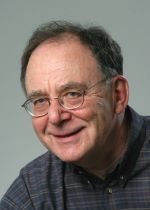Q&A with Richard Karp
Establishing a new research institute at a top-tier university is a major undertaking that required a great deal of teamwork to pull off. In a recent interview, Richard Karp, founding director of the Simons Institute for the Theory of Computing, gave the inside story on how it all came together.
May 1, 2012
Establishing a new research institute at a top-tier university is a major undertaking that required a great deal of teamwork to pull off. In a recent interview, Richard Karp, founding director of the Simons Institute for the Theory of Computing, talked about how the grant proposal came together.

Richard Karp
Q: What does it take to get a proposal for something like this together? I take it that there is a lot of behind-the-scenes work involved.
A: In the beginning as we were developing the proposal, we concentrated on the science. We had extended discussions about what Berkeley’s advantages were, its strengths across the board, its connections with Silicon Valley, and its particular strengths in computer science, statistics and mathematics. At least a dozen different faculty got involved in formulating specifications of the kinds of programs that would best serve the worldwide scientific community if we got the grant for the Simons Institute.
All of that was just on the scientific side, but there were many other dimensions to this that I was not experienced in, ranging from budgeting to support services to all kinds of logistical issues. For that, I was really bailed out by people in the College of Engineering’s College Relations office, and the staff at ERSO [Engineering Research Support Organization], who agreed to handle accounting and budgetary activities.
Dean Shankar Sastry was extremely helpful in fostering all of these contributions from the College of Engineering. David Culler, the chair of computer science, played a very encouraging role throughout, and in particular, emphasized the need to connect with Silicon Valley companies who might become sponsors of the institute.
We also had to develop a plan for the space where the institute would occupy, and one of the crucial breakthroughs was when Vice Chancellor [for Research] Graham Fleming proposed that we use Calvin Hall as the base of our institute. That was the biggest single step forward for us; I think the acquisition of a building right on the central campus was really crucial for our cause.
Once we were granted Calvin Hall, people in the College of Engineering’s Capital Projects played a big role in mobilizing an architectural firm to sketch out what Calvin Hall could be transformed into.
Q: Why was it so important to have the Simons Institute sited on campus?
A: One of the great assets to our approach was that we wanted to reach out very broadly to disciplines across the campus, and so having it on campus and accessible for all of the Berkeley departments and students just made a huge difference.
Dean Mark Richards encouraged us to talk to people across the College of Letters and Science, which paid off tremendously because we were able to mobilize dozens of faculty members to attend the crucial Simons Foundation site visit, and testify to what it would mean to each of them in their own specific fields to have the institute here at Berkeley. And I think this meant a great deal.